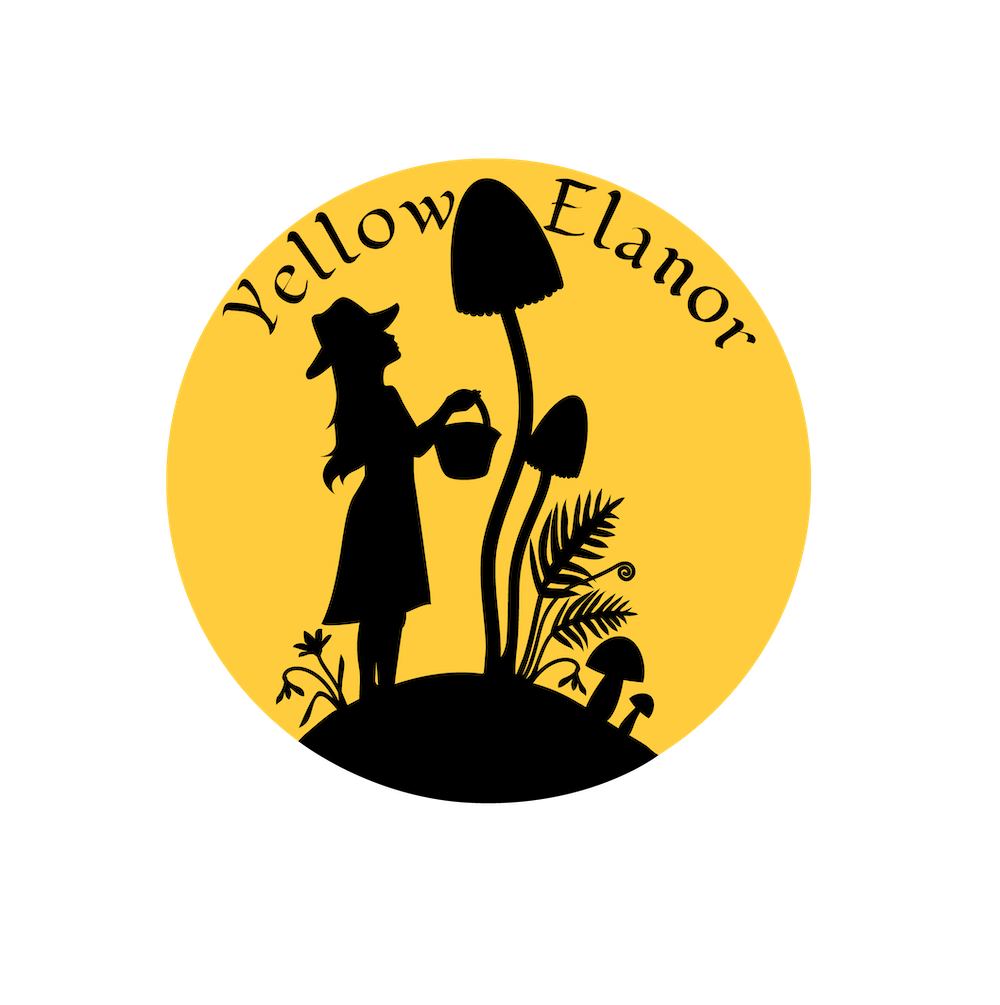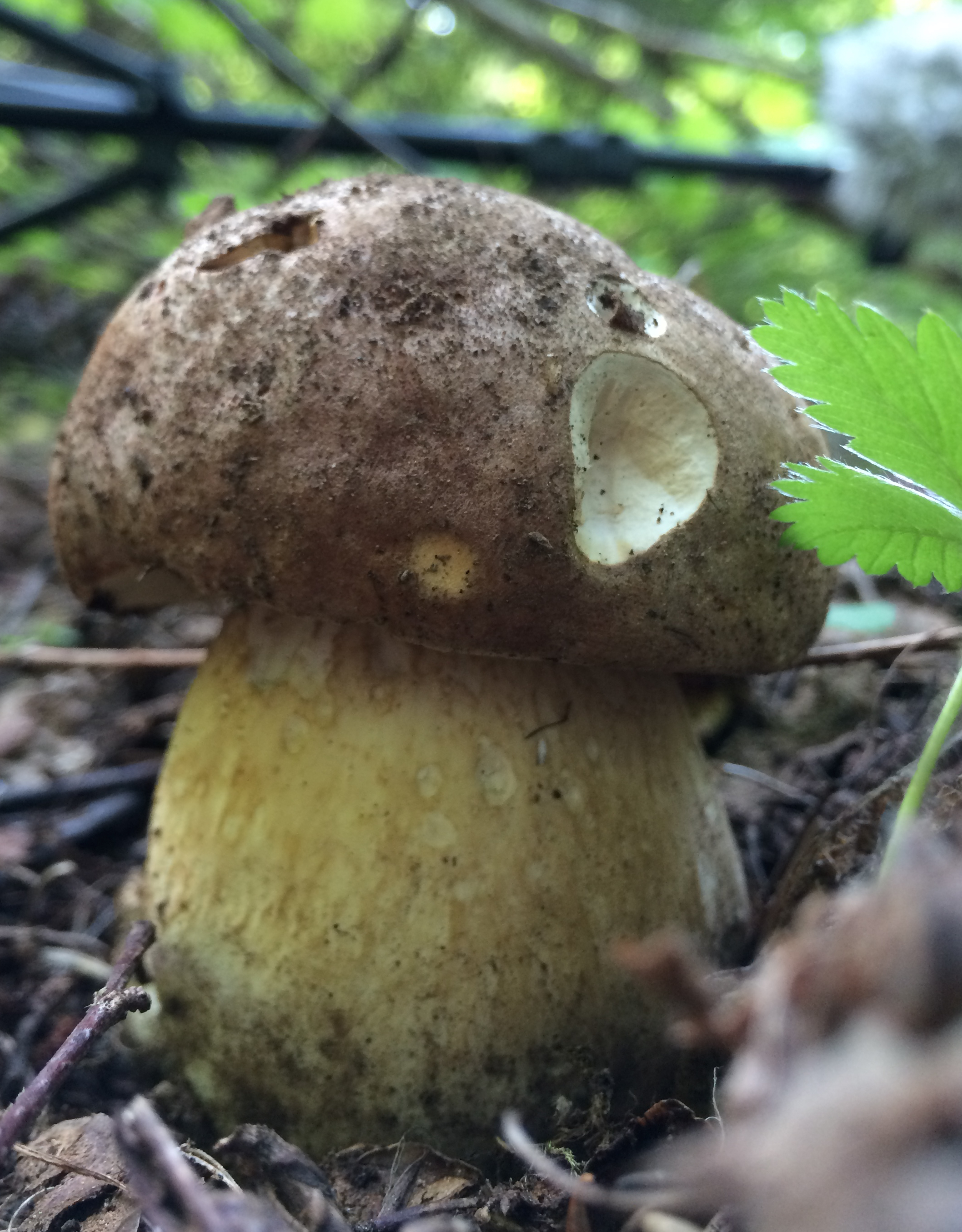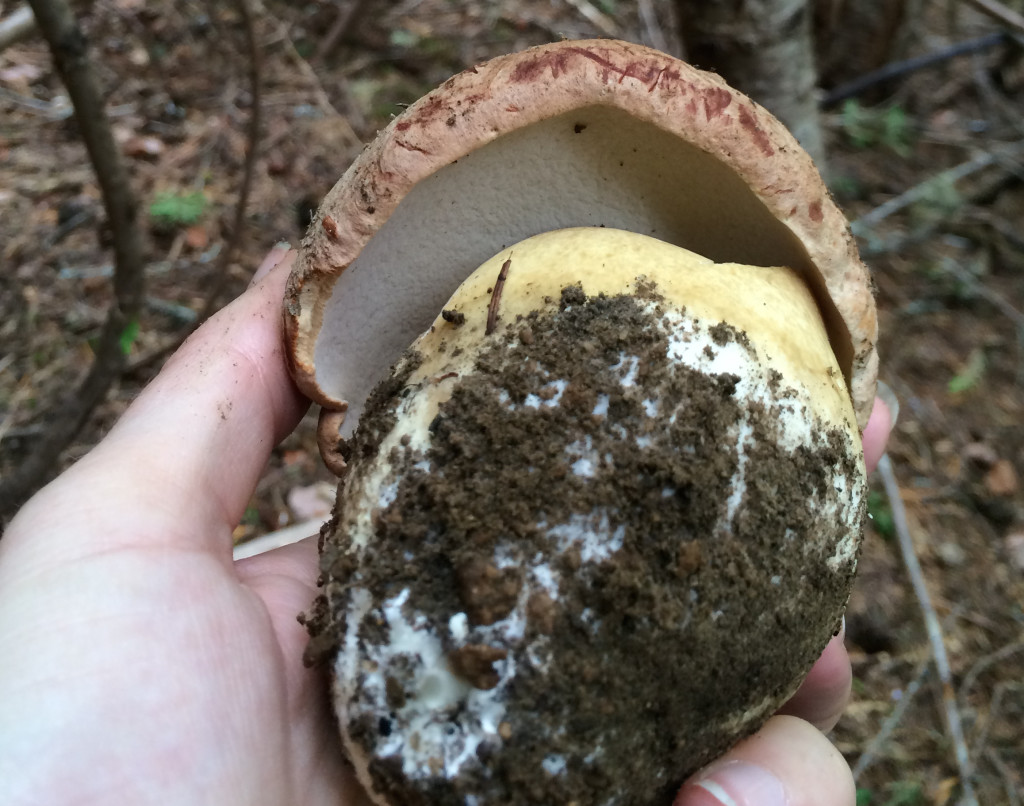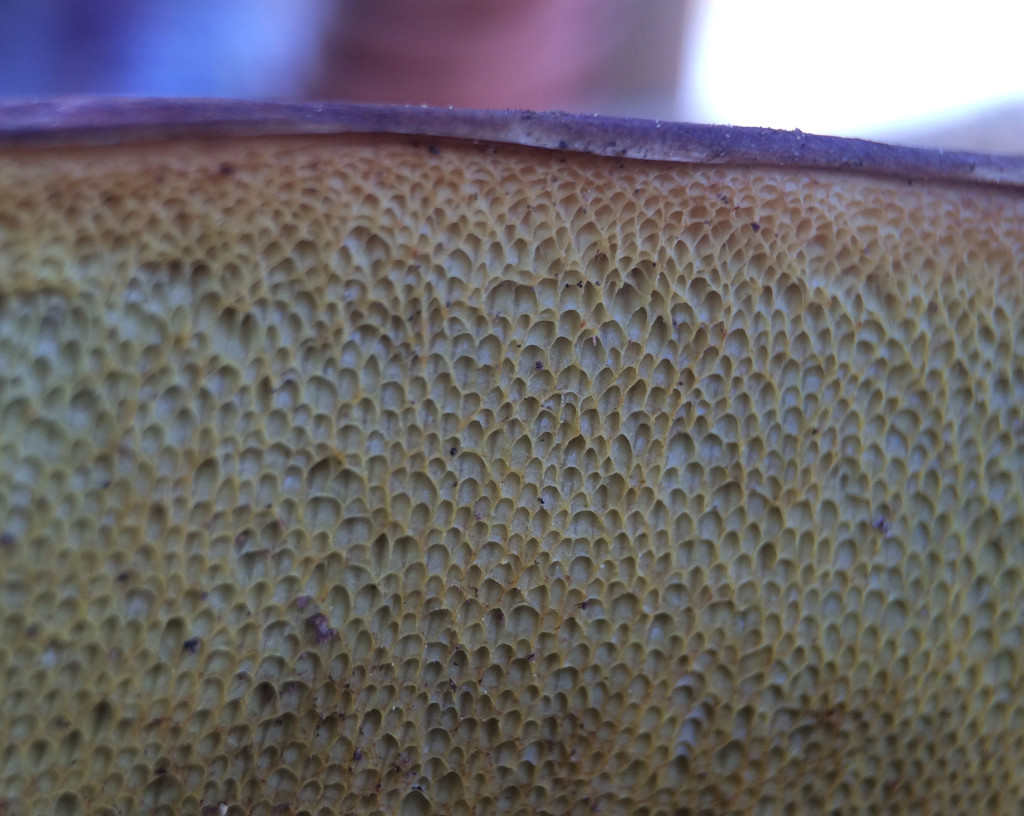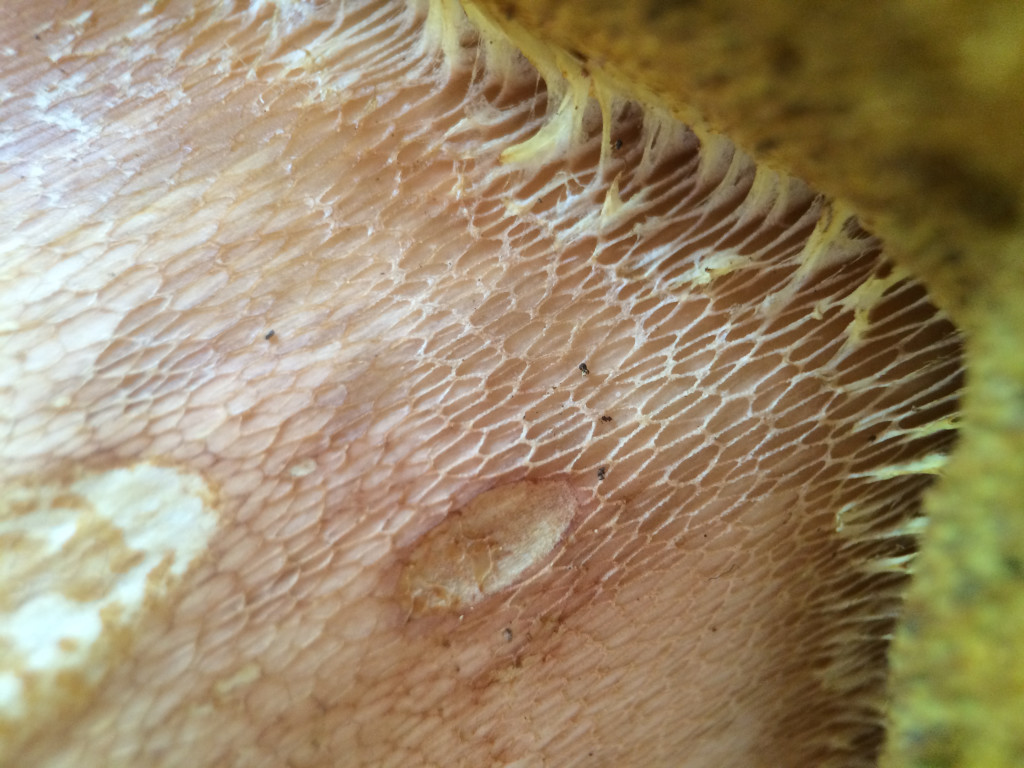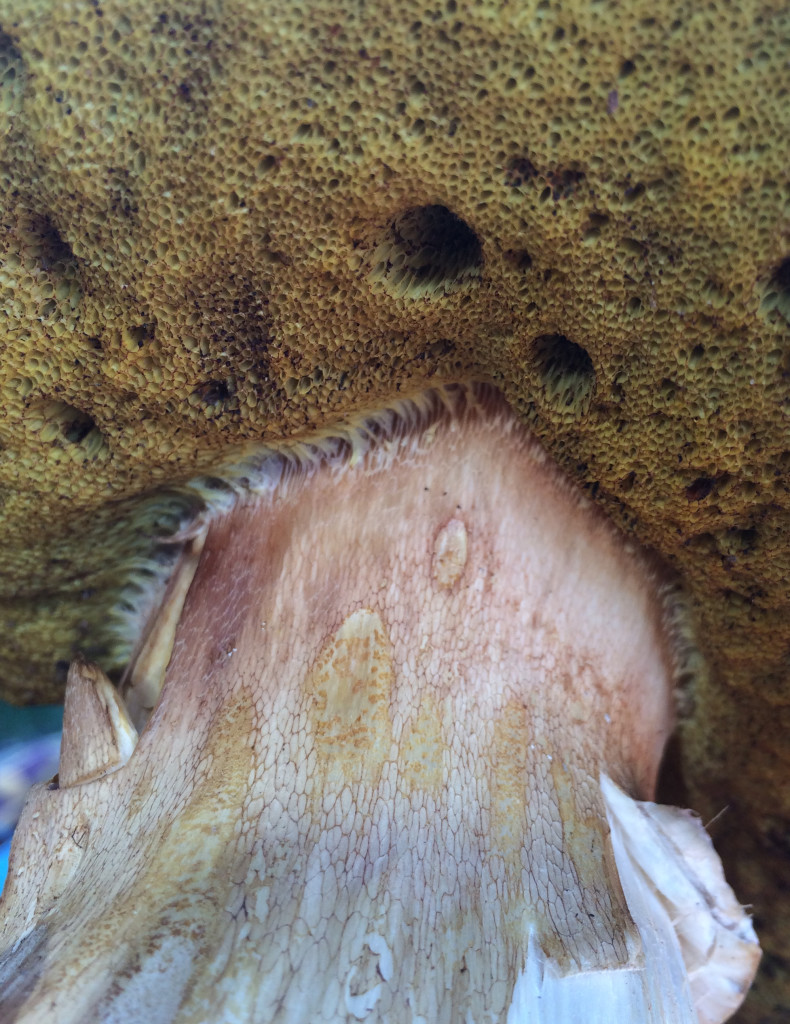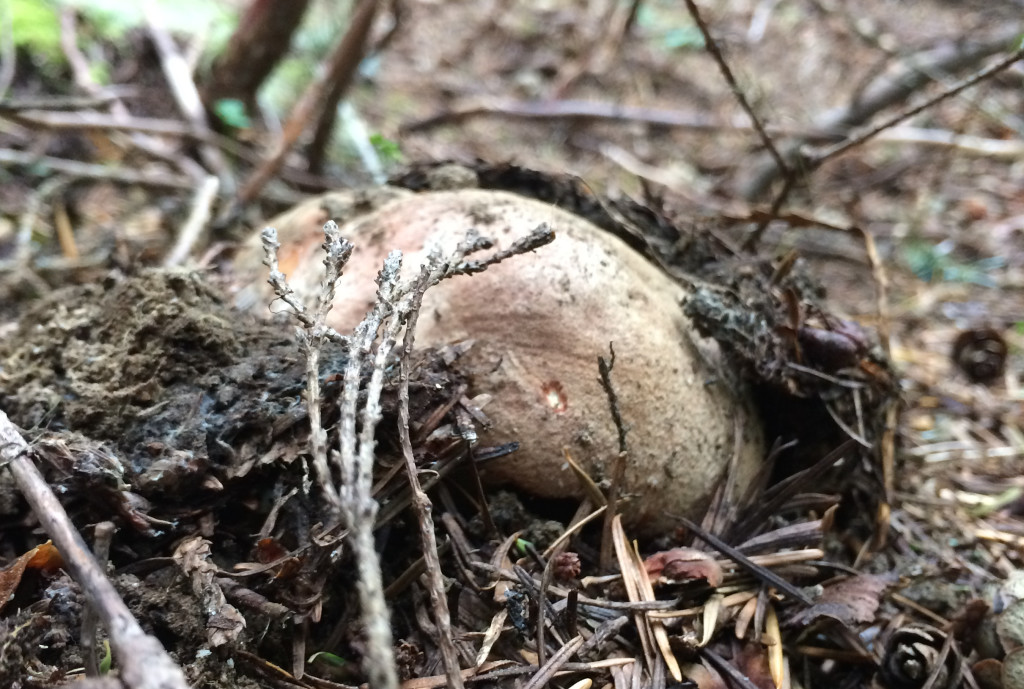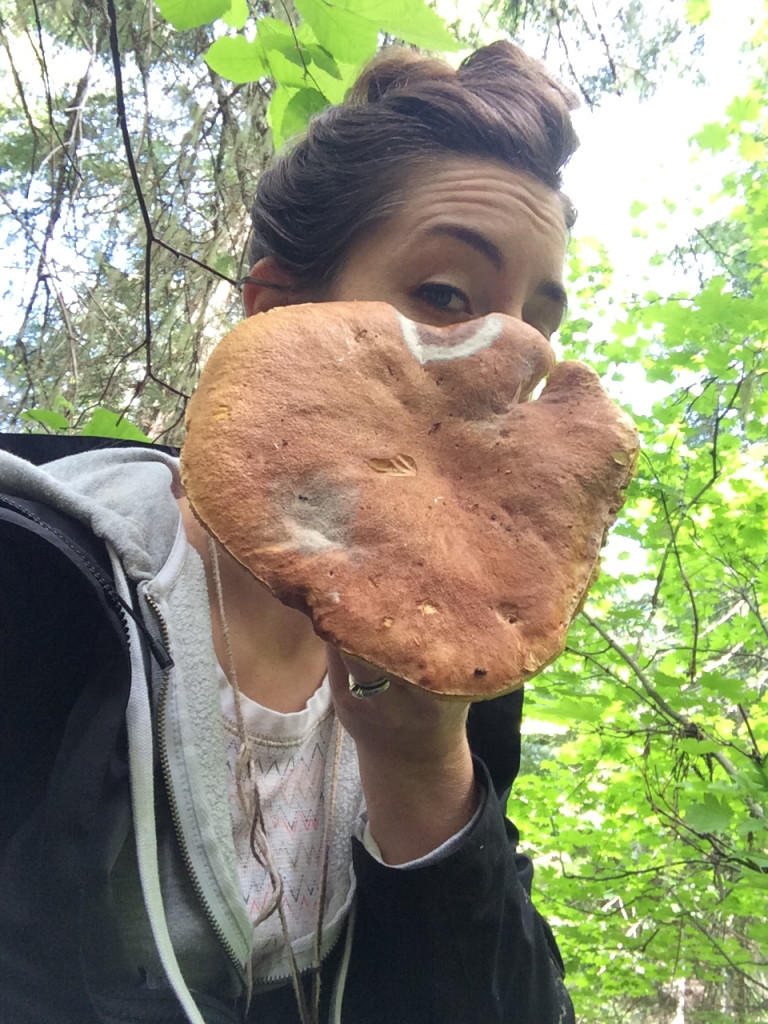Spring King/Boletus rex-veris:
I filled my first few mushroom hunting springs searching for morels, at that point I knew little of any other spring mushroom worth hunting. I had no idea of what I was missing out on until the Spring King and I met, and of all people, it was a four year old boy who introduced us.
While in a Dr’s office I overheard the father of the four-year-old pointing at a mushroom sticker saying, “are you excited to go mushroom hunting tomorrow?” I mentioned to them that I had great success with morels so far that year, the father clarified and told me they were going hunting for “Kings”. I thought to myself…“Kings? Aren’t they a fall mushroom?” of course not wanting to look ignorant I didn’t ask the question out loud.
The young boy began to fill me in about his up coming mushroom hunt, “Sometimes the mushrooms get really big, bigger than my head! We camp and cook some for dinner, but it’s very far to drive, up and up to the mountain. We go to the big mountain, Mt. Adams-right dad?” His dad shot him one of those “dad looks” signifying for him to be quiet and not share any more details of the hunt and location.
“Ahhh…” I thought to myself, “he doesn’t want me to know where they’re going…” I knew I had to look into it if it was worth keeping a secret, and thankfully my little mushroom hunting friend had spilled enough clues for me to put the pieces together. Not too long after, the Spring King and I met for the first time, in the shadows of Mt Adams.
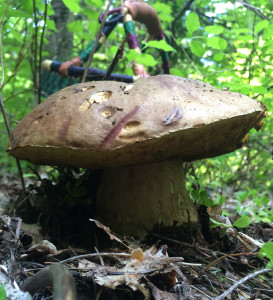
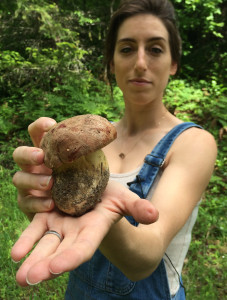 The Spring King is often referred to as the ‘cousin’ of the distinguished fall fruiting mushroom, the King Bolete. At one point they were thought to be the same species, simply fruiting both in the spring and the fall, but now we know otherwise and this beautiful spring bolete is classified as a species in itself.
The Spring King is often referred to as the ‘cousin’ of the distinguished fall fruiting mushroom, the King Bolete. At one point they were thought to be the same species, simply fruiting both in the spring and the fall, but now we know otherwise and this beautiful spring bolete is classified as a species in itself.
Boletus rex-veris: Boletus deriving from both Greek and Latin origins meaning edible mushroom or even superior mushroom. Rex meaning ‘king’ and veris, spring.
How to Identify:
They are robust mushrooms, thick stems centrally located under thick fleshy caps with a sponge like tube surface underneath instead of gills.
Pores/Tubes: When young, the tube layer is white and dense, the pores tiny and compact. As the mushroom matures the tubes change color to yellow/green and the pores expand giving the pore surface a spongy look.
A young specimen with dense, white tube layer under the cap.
More mature specimen with pores wider open and yellow.
Cap: The cap begins a pale pink/brown color then matures into a darker cinnamon brown. When very young, the outer margin of the cap is often incurved, sometimes rolling inward enough to cover much of the pore surface. Young caps will often have what is referred to as “bloom” a white powdery-looking substance concentrated on the outer margin.
Stem: The stem is thick, sometimes just as wide as the cap. It is creamy white in color and can sometimes change to shades of light brown when mature. There is a pattern on the stem that looks like webbing or netting, this is called reticulation. Reticulation is easiest to observe higher up on the stem near the cap and is a distinctive factor between the delicious Spring King and the unpleasant Bitter Bolete.
A Close up of reticulation. It is easiest to see near the cap.
Reticulation can go much further down the stem on more mature specimens.
Additional Details: When cut or broken, they do not bruise blue like two of their fellow spring fruiting boletes. When cut, both flesh and pore surface of the Spring King do not change color. While both Boletus regius (Red Capped Butter Bolete) and Boletus rubripes’s (Bitter Bolete) pores will stain blue once handled. They can range in size depending on maturity and environmental factors. The young buttons may be golf ball sized-and just as round. While fully mature specimens’ caps may easily grow larger than your head.
Where and When to Find Them:
As the name indicates, these are spring mushrooms, you can find them in Western North America, May to June. They generally begin to show midway through morel season and tend to like higher elevations, 3,500 ft to 8,000 ft.
Spring Kings grow from the dirt and duff and tend to grow near pine and fir trees, they appear to have a mycorrhizal relationship with the ponderosa pine specifically.
They like areas with moisture but do not like boggy muddy areas, hillsides with tall tree coverage lend to moist but well drained soil and can be more fruitful.
Find yourself a slope with ponderosa pine at 4,000 ft in elevation in the Cascade Mountain Range at the end of May, and likely you will find yourself some beautiful Spring Kings.
Now, the tricky part about finding Spring Kings…to collect them in the most pristine condition possible, you want to find them before they burst out of the dirt and fully extend their large caps in the air. A fully mature Spring King is easy to spot, standing tall and proud, but a young Spring King hides in the duff barely poking its cap out. In fact finding them while still covered in dirt is prime! How do you spot a mushroom while it’s still underground? You look for bumps in the dirt, small patches of fresh earth that have been pushed up, and then cross your fingers as you dig and hope its a mushroom and not a rock or pinecone or an animal! These pushed up patches of earth are often referred to as “Mushrumps”, mushroom bumps.
A partially emerged Spring King, unburied just enough to see.
The benefit of collecting Spring Kings in this manner is that it helps you avoid sharing your mushroom with an assortment of bugs that love to feast on them. Worms in particular can eat away at a Spring King rather quickly, especially once it has ‘popped’ up out of the dirt. Finding a young, firm Spring King that fits like a baseball in your hand is ideal! If your mushroom is squishy, full of holes inside and has a bad smell, then it’s too far gone and it’s best to let the bugs continue to enjoy their dinner.
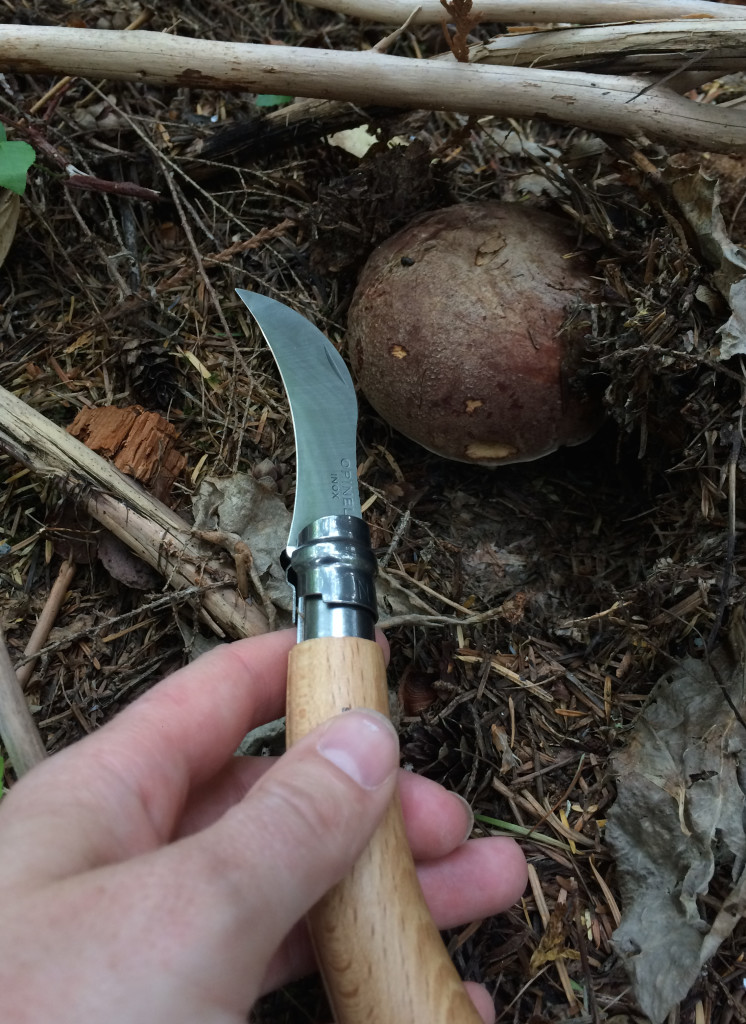
A freshly unburied specimen, at the ideal size, it was bug free and delicious.
These Spring Kings are unique to other boletes in that they cluster, sometimes three or more bundled together.
Mushroom Care:
It’s a good idea to remove the dirt from your Spring Kings before putting them in your basket, they can easily make a mess of whatever else you may have in there by sharing all the dirt and duff they have on them. Brushing off the cap with a cloth or brush, then using your knife to scrape the stem free of caked on dirt will do the trick. Those two steps will improve your after foraging clean up experience greatly!
Cut the base of the mushroom’s stem off so you can see the white flesh inside, check for any holes that could indicate worms have made their way inside. It’s also a good idea to cut the mushroom lengthwise to check for worms. If you see a few small infected areas, simply cut them out and keep the rest of the mushroom.
Be warned! You may pick a perfectly firm mushroom in the morning, but if you don’t check to see if a few worms may be inside, by the time you get to the car in the evening that mushroom may be completely unusable. Field dress your mushrooms!
Warm temperatures tend to get the little wormies wiggling more, keep your mushrooms cool to deter them. Put them on ice or in the refrigerator as soon as possible. But, do not think the cool of the refrigerator will stop the worms from migrating through your mushrooms all together, if there are just one or two buggies in your mushroom, they will continue to munch away until you’ve decided it’s your turn to munch away at that same mushroom. The refrigerated shelf life of boletes is not long, if perfectly trimmed with NO worms they can be kept for a few days at most.
With more mature specimens, you may want to separate the spongy pore layer from the cap. A thick bolete cap with the pores removed can cook up like a steak while the pore layer (generally quite water concentrated) can be dried and used for gravy and soups.
If drying the mushrooms, separate the pore layers then dry and store them separately from the dried stem and cap portion of the mushroom. Different parts of the mushroom are more ideal for certain dishes.
With young firm specimens, removing the pore layer is not necessary. The tubes are much smaller and compact, making them nearly the same consistency as the rest of the mushroom, they can be cooked or dried together.
Spring Kings are considered edible when raw, however, our digestive system isn’t able to break down the mushroom well and that may cause some discomfort for people.
Boletes are an incredibly diverse mushroom to cook with. They can be sautéed, grilled, baked, made into stalk, soups or spreads.
Drying is the best way to preserve them, in fact it often intensifies the flavor of the mushroom. Drying then storing in tight sealing containers assures you can enjoy your harvest for years to come!
My young mushroom hunting friend who introduced me to the Spring King was right, they can get the size of your head!
